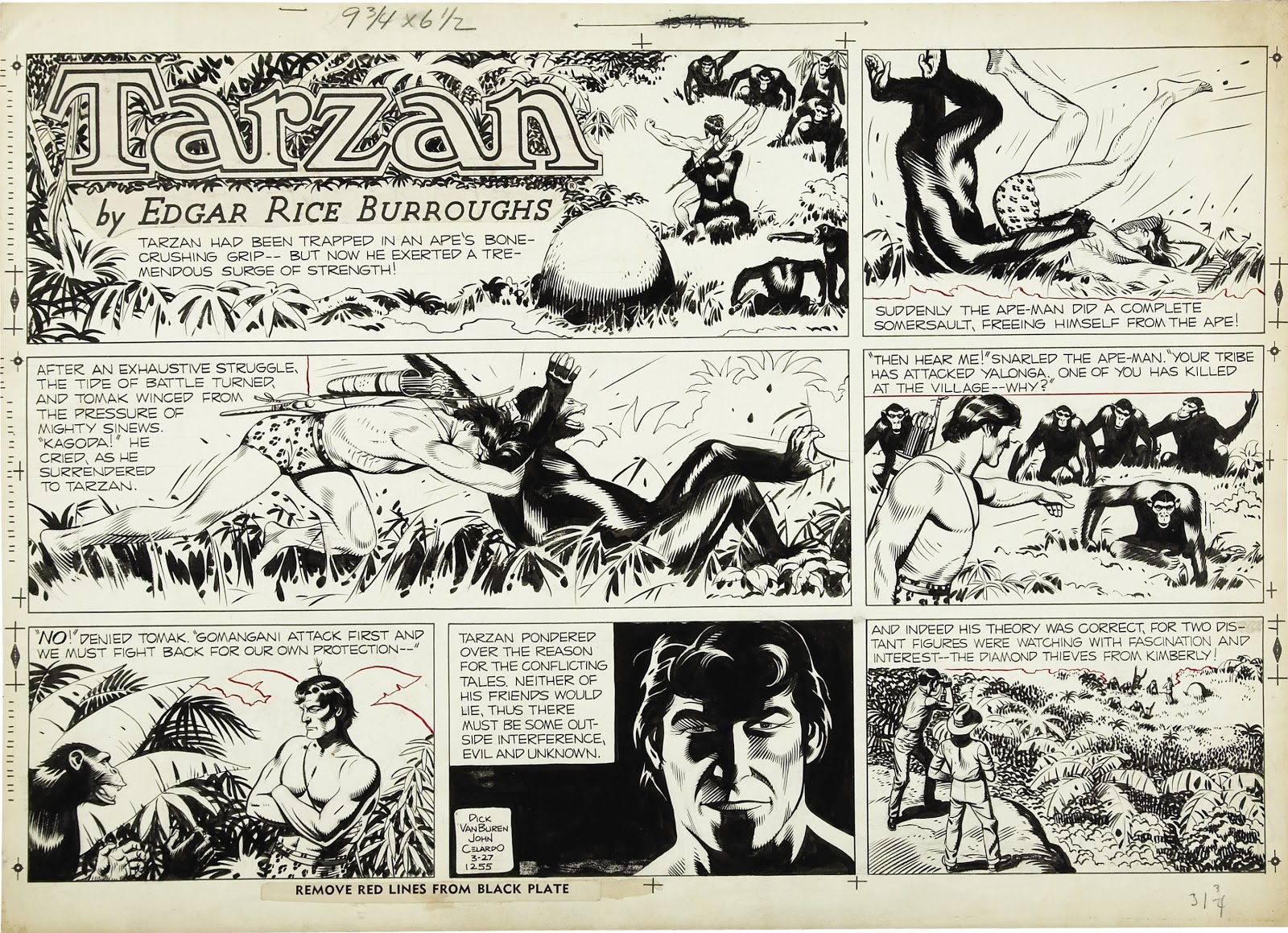Tuesday, September 27, 2016
Ink-Slinger Profiles by Alex Jay: John Celardo
John G. Celardo was born in Staten Island, New York on December 27, 1918. His birthplace was reported in the Staten Island Advance, January 7, 2012. His birthdate was found in the U.S. Public Records Index, Volume 1 and 2, at Ancestry.com.
In the 1920 U.S. Federal Census, he was the oldest of two sons born to Frank and Annie, both Italian emigrants. They lived in Richmond (Staten Island), New York at 37 Leyden Avenue. His father was a riveter in the shipbuilding industry.
The 1930 census recorded Celardo in Richmond at 56 Grand View Avenue; he was the oldest of four brothers. According to the Advance, he “grew up in Mariners Harbor and graduated from Port Richmond High School. He attended the New York Industrial Arts School, Federal Arts School and New York School of Visual Arts….He began working as an artist in the late 1930s drawing animals at the Staten Island Zoo for the National Youth Administration, which help prepare him for his subsequent career as a cartoonist.”
In the World Encyclopedia of Comics (1976), Rick Marschall wrote:
Celardo’s first professional work was doing sports cartoons and spots for Street and Smith publications in 1937. From there he graduated to comic books and worked for Eisner and Iger. When Quality Comics gathered its own staff and raided the Iger shop, Celardo was one of the artists; there he worked on Dollman, Wonder Boy, Uncle Sam, Paul Bunyan, Espionage, Hercules, Old Witch and Zero comics. He sometimes signed his work John C. Lardo.In 1940 Celardo also worked for Fiction House...There he drew Hawk, Red Comet, Powerman, Captain West and Kaanga; while after the war, from 1946-49, he rejoined Fiction and worked on the Tiger Man, Suicide Smith, and other titles.
In the 1940 census, he was the oldest of five brothers, who lived with their parents at 84 Grand View Avenue. Celardo enlisted in the Army February 24, 1941. The Advance said, “He served in the U.S. Army during World War II, seeing duty in the European theater and attaining the rank of captain. After his military service, he lived in Castleton Corners, then eventually settled in Graniteville.” He had a studio according to the Manhattan Directory 1949 which had a listing: “Celardo John art studio 545 5Av MUryhil 7-529”.
He drew the Tarzan daily from January 11, 1954 to December 9, 1967 and the Sunday pages from February 21, 1954 to January 7, 1968.
Celardo passed away January 6, 2012, in Staten Island, New York.
Labels: Ink-Slinger Profiles

